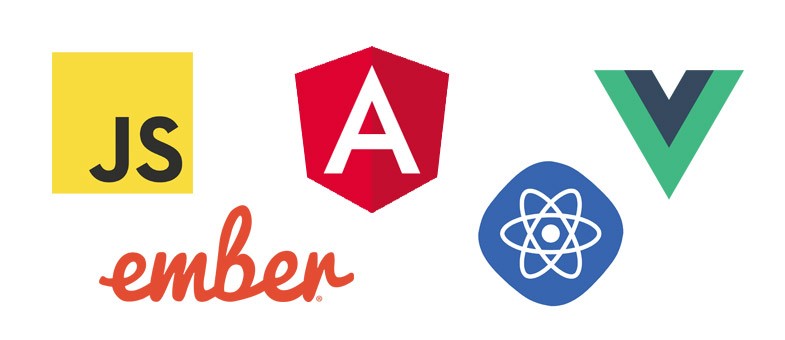The software development industry continues its relentless march forward. In 2016 we saw new releases of popular languages, frameworks and tools that give us more power and change the way we work. It is difficult to keep track of everything that is new, so at the end of every year we give you our take on what is important and what you should learn during the next twelve months.
The Trends
Progressive Web Apps
In 2016 we saw the rise of the Progressive Web App concept. It represents web applications that work offline and offer a native, app-like experience. They can be added to your smart device's homescreen and can even send you push notifications, bridging the gap with native mobile apps. We think that in 2017 PWA are going to become even more important and are well worth investigating. See our overview here.
The Bot Hype
Everybody is talking about bots right now. From platforms for running them, to frameworks for building them, the community is buzzing with activity (read our intro here). Bots are the new mobile apps, and if you hurry up you can catch the wave while everyone is excited. Once the novelty wears off, bots will probably be relegated to some boring role such as automated customer support. But hey, we can dream!
Consolidation of Frontend Frameworks
In the JavaScript community we have an incredible churn of frameworks and tools, with new ones being born almost every week. Until recently, the expectation was that the old tools would just be replaced by the new, but this is not what we saw in 2016. Instead, we saw the popular frameworks exchanging ideas and incorporating the innovations put forth by newcomers. So in 2017 it won't matter much which of the major JS frameworks you choose, their features are mostly comparable.
The Cloud
Companies and developers everywhere are embracing "the cloud". This is virtualized computer infrastructure that is available on demand and fully configurable from a control panel. The big three cloud providers are AWS, Google Cloud and Azure. Thanks to their ongoing competition prices have been falling, bringing it within the budgets of smaller companies and individual developers. Familiarizing yourself with the cloud workflow would be a good investment for 2017.
Machine Learning
Machine Learning (ML) has exploded in popularity during the last twelve months. And with the historic AlphaGo vs Lee Sedol match in March, it entered the mainstream. Smart computer systems that learn from raw data are revolutionizing the way we interact with our mobile devices. By the looks of it, ML will be an even bigger factor in 2017.
Languages
JavaScript continues its incredible pace of innovation. Catalyzed by the quick release schedules of web browsers, the JS standard is updated every year. The next edition, ES2017, is expected to be finalized in mid 2017. It will bring the dream feature of many JS developers -
аsync/аwait for working with asynchronous functions. And thanks to Babel, you can write ES2017 in every browser even today.
TypeScript 2.1 was released in late 2016, bringing
async/await for old browsers and improved type inference. TypeScript is a statically typed language which compiles to JavaScript. It adds powerful features like a classic OOP model and optional static typing to make large codebases easier to maintain. It is the preferred language for writing Angular 2 apps, and we recommend giving it a try. Here is our quick start guide about it.
C# 7.0 is expected in 2017 and will enhance an already excellent language. Microsoft surprised everyone when they introduced the open source Visual Studio Code editor and .Net Core. Both of these run on Linux, Windows and macOS and allow you to write fast and performant applications in C# (read more here). A vibrant community is forming around both of these tools, and we are confident there is an exciting year ahead of them.
Python 3.6 was released in December. It is solidifying its place as the scripting language of choice for devs, IT pros and scientists. It is suitable for automation, web development, machine learning and scientific computing. The Python 2/3 split has been an years-long struggle for the community, but these days you can confidently choose 3 and enjoy full library support. For those in need of extra performance, they can take a look at PyPy, an alternative JIT enabled Python runtime.
Ruby 2.3 was released earlier this year with a number of performance improvements. Ruby is also a good choice as a general purpose scripting language, but it shines when paired with Rails. The Ruby 3x3 initiative was announced, which will attempt to make the upcoming Ruby 3 release 3 times faster that the current version, opening the doors to using Ruby in more contexts.
PHP 7.1 was released in December, and brings minor enhancements to the language. This builds upon the major performance improvements that were had in version 7.0 last year, turning PHP into a fast platform for building web applications. We recommend PHP The Right Way for good practices and a modern take on building web apps in the language.
Java 9 is expected in 2017 and will come with welcome new features like a repl for evaluating code, HTTP 2.0 support and new APIs. There is a strong demand for talented Java developers and a breadth of exciting projects that use the language. If Java is not your thing, there are a number of JVM based languages like Kotlin and Scalathat you can check out.
Swift 3 was released earlier this year. This is Apple's vision for a modern programming language that eases the development of apps on iOS and macOS. Swift is open source and has attracted a large community. Version 4 is planned for 2017, which will improve the language and introduce server APIs, making it a good choice for writing web apps and backends.
If you are looking for something more exciting, you can try out Crystal and Elixir, which both combine a friendly ruby-like syntax with superior performance. Or you can look into a functional language like Haskell or Clojure. Two other fast languages are Rust and Go which we recommend.
Learn one or more of these: JS (ES2017), TypeScript, C#, Python, Ruby, PHP7, Java/Kotlin/Scala.

Frontend
The web platform made two major advancements recently - Web Assembly and Service Workers. They open the gates for fast and performant web applications that bridge the gap with native compiled applications. Service Workers in particular are the enabling technology for Progressive Web Apps and bring support for Notifications to the web platform, with more APIs to follow in the future.
Angular.js 2 was released this year. The framework is backed by Google and is very popular with enterprises and large companies. It has a vast number of features that make writing everything from web to desktop and mobile apps possible. The framework is written in TypeScript, which is also the recommended language to write applications in. There is a lot to read about, but we think learning Angular 2 in 2017 would be a good investment.
Vue.js also saw its 2.0 release this year. It borrows the good ideas from Angular, React and Ember, and puts them into an easy to use package. It is also quite a bit leaner and faster than the first two. We suggest that you give it a try this year, by starting with one of our Vue.js tutorials.
Ember is another solid choice for a JavaScript framework. It supports data bindings, auto-updating templates, components and server-side rendering. One benefit that it has over its competitors, is that it is more mature and stable. Breaking changes are much less frequent and the community values backwards compatibility. This makes the framework a good choice for long-lived applications.
Two other frameworks that are worth a look are Aurelia and React. The ecosystem around React has grown considerably more complicated in the last year, making it difficult to recommend for beginners. But experienced devs can combine the library with GraphQL, Relay, Flux and Immutable.js into a comprehensive full stack solution.
No frontend compilation would be complete without mentioning Bootstrap. Version 4 is currently in Alpha and a release is expected in 2017. Notable changes are the new versatile card component and the flexbox grid (see our comparison with the regular grid here), which modernize the framework and make it a joy to work with.
SASS and LESS remain the two most popular CSS preprocessors today. Although vanilla CSS is finally getting support for variables, SASS and LESS are still superior with their support for mixins, functions and code organization. If you haven't already, take a look at our SASS and LESS quick start guides.
Learn one or more of these: Angular 2, Vue.js, Ember, Bootstrap, LESS/SASS.
Full article > http://tinyurl.com/y7md8cbm























